High-Harmonic and Terahertz Spectroscopy (HATS): Methods and Applications
Abstract
1. Introduction
1.1. High-Order Harmonics and Terahertz Wave: Up- and Down-Conversion of Laser Frequency
1.2. Rescattering Process and the Joint Measurement of HATS
2. HATS for Atoms
2.1. Attosecond-Resolved THz Generation from Argon
2.2. THz Benchmark for the Long and Short Trajectories of HHG
3. HATS for Molecules
3.1. THz Reference for Molecular Photoionization
3.2. The Alignment Dependent Electron Dynamics for HHG with THz Phase Reference
4. Prospective
4.1. HATS for Polar Molecules
4.2. HATS for Solid and Liquid Media
Funding
Conflicts of Interest
Abbreviations
| THz | Terahertz |
| HHG | High-order Harmonic Generation |
| HATS | High-harmonic And Terahertz Spectroscopy |
| PICS | Photo-Ionization Cross Section |
| TDSE | Time-Dependent Schrödinger Equation |
| CTMC | Classical-Trajectory Monte Carlo |
| LES | Low Energy Structure |
| SFA | Strong Field Approximation |
| QRS | Quantitative Re-Scattering |
| HOMO | Highest Occupied Molecular Orbital |
| MO-SFA | MOlecular Strong Field Approximation |
References
- Paul, P.M.; Toma, E.S.; Breger, P.; Mullot, G.; Augé, F.; Balcou, P.; Muller, H.G.; Agostini, P. Observation of a rain of Attosecond Pulses from High Harmonic Generation. Science 2001, 292, 1689–1692. [Google Scholar] [CrossRef] [PubMed]
- Corkum, P.B.; Krausz, F. Attosecond science. Nat. Phys. 2007, 3, 381–387. [Google Scholar] [CrossRef]
- Krausz, F.; Ivanov, M. Attosecond physics. Rev. Mod. Phys. 2009, 81, 163–234. [Google Scholar] [CrossRef]
- Jordan, I.; Jain, A.; Gaumnitz, T.; Ma, J.; Wörner, H.J. Photoelectron spectrometer for liquid and gas-phase attosecond spectroscopy with field-free and magnetic bottle operation modes. Rev. Sci. Instrum. 2018, 89, 053103. [Google Scholar] [CrossRef] [PubMed]
- Kruchinin, S.Y.; Krausz, F.; Yakovlev, V.S. Colloquium: Strong-field phenomena in periodic systems. Rev. Mod. Phys. 2018, 90, 021002. [Google Scholar] [CrossRef]
- Corkum, P.B. Plasma perspective on strong field multiphoton ionization. Phys. Rev. Lett. 1993, 71, 1994–1997. [Google Scholar] [CrossRef] [PubMed]
- Popmintchev, T.; Chen, M.C.; Popmintchev, D.; Arpin, P.; Brown, S.; Ališauskas, S.; Andriukaitis, G.; Balčiunas, T.; Mücke, O.D.; Pugzlys, A.; et al. Bright Coherent Ultrahigh Harmonics in the keV X-ray Regime from Mid-Infrared Femtosecond Lasers. Science 2012, 336, 1287–1291. [Google Scholar] [CrossRef] [PubMed]
- Popmintchev, D.; Hernández-García, C.; Dollar, F.; Mancuso, C.; Pérez-Hernández, J.A.; Chen, M.C.; Hankla, A.; Gao, X.; Shim, B.; Gaeta, A.L.; et al. Ultraviolet surprise: Efficient soft x-ray high-harmonic generation in multiply ionized plasmas. Science 2015, 350, 1225–1231. [Google Scholar] [CrossRef] [PubMed]
- Kim, K.T.; Villeneuve, D.M.; Corkum, P.B. Manipulating quantum paths for novel attosecond measurement methods. Nat. Photonics 2014, 8, 187–194. [Google Scholar] [CrossRef]
- Yost, D.C.; Schibli, T.R.; Ye, J.; Tate, J.L.; Hostetter, J.; Gaarde, M.B.; Schafer, K.J. Vacuum-ultraviolet frequency combs from below-threshold harmonics. Nat. Phys. 2009, 5, 815–820. [Google Scholar] [CrossRef]
- Power, E.P.; March, A.M.; Catoire, F.; Sistrunk, E.; Krushelnick, K.; Agostini, P.; Dimauro, L.F. XFROG phase measurement of threshold harmonics in a Keldysh-scaled system. Nat. Photonics 2010, 4, 352–356. [Google Scholar] [CrossRef]
- Soifer, H.; Botheron, P.; Shafir, D.; Diner, A.; Raz, O.; Bruner, B.D.; Mairesse, Y.; Pons, B.; Dudovich, N. Near-Threshold High-Order Harmonic Spectroscopy with Aligned Molecules. Phys. Rev. Lett. 2010, 105, 143904. [Google Scholar] [CrossRef] [PubMed]
- Blaga, C.I.; Catoire, F.; Colosimo, P.; Paulus, G.G.; Muller, H.G.; Agostini, P.; Dimauro, L.F. Strong-field photoionization revisited. Nat. Phys. 2009, 5, 335–338. [Google Scholar] [CrossRef]
- Quan, W.; Lin, Z.; Wu, M.; Kang, H.; Liu, H.; Liu, X.; Chen, J.; Liu, J.; He, X.T.; Chen, S.G. Classical Aspects in Above-Threshold Ionization with a Midinfrared Strong Laser Field. Phys. Rev. Lett. 2009, 103, 093001. [Google Scholar] [CrossRef] [PubMed]
- Liu, C.; Hatsagortsyan, K.Z. Origin of Unexpected Low Energy Structure in Photoelectron Spectra Induced by Midinfrared Strong Laser Fields. Phys. Rev. Lett. 2010, 105, 113003. [Google Scholar] [CrossRef] [PubMed]
- Cook, D.J.; Hochstrasser, R.M. Intense terahertz pulses by four-wave rectification in air. Opt. Lett. 2000, 25, 1210–1212. [Google Scholar] [CrossRef] [PubMed]
- Zhang, D.; Lü, Z.; Meng, C.; Du, X.; Zhou, Z.; Zhao, Z.; Yuan, J. Synchronizing Terahertz Wave Generation with Attosecond Bursts. Phys. Rev. Lett. 2012, 109, 243002. [Google Scholar] [CrossRef] [PubMed]
- Lü, Z.; Zhang, D.; Meng, C.; Du, X.; Zhou, Z.; Huang, Y.; Zhao, Z.; Yuan, J. Attosecond synchronization of terahertz wave and high-harmonics. J. Phys. B Atom. Mol. Opt. Phys. 2013, 46, 155602. [Google Scholar] [CrossRef]
- Liu, J.; Chen, W.; Zhang, B.; Zhao, J.; Wu, J.; Yuan, J.; Zhao, Z. Trajectory-based analysis of low-energy electrons and photocurrents generated in strong-field ionization. Phys. Rev. A 2014, 90, 063420. [Google Scholar] [CrossRef]
- Chen, W.; Huang, Y.; Meng, C.; Liu, J.; Zhou, Z.; Zhang, D.; Yuan, J.; Zhao, Z. Theoretical study of terahertz generation from atoms and aligned molecules driven by two-color laser fields. Phys. Rev. A 2015, 92, 033410. [Google Scholar] [CrossRef]
- Huang, Y.; Meng, C.; Wang, X.; Lü, Z.; Zhang, D.; Chen, W.; Zhao, J.; Yuan, J.; Zhao, Z. Joint Measurements of Terahertz Wave Generation and High-Harmonic Generation from Aligned Nitrogen Molecules Reveal Angle-Resolved Molecular Structures. Phys. Rev. Lett. 2015, 115, 123002. [Google Scholar] [CrossRef] [PubMed]
- Dudovich, N.; Smirnova, O.; Levesque, J.; Mairesse, Y.; Ivanov, M.Y.; Villeneuve, D.M.; Corkum, P.B. Measuring and controlling the birth of attosecond XUV pulses. Nat. Phys. 2006, 2, 781–786. [Google Scholar] [CrossRef]
- Daranciang, D.; Goodfellow, J.; Fuchs, M.; Wen, H.; Ghimire, S.; Reis, D.A.; Loos, H.; Fisher, A.S.; Lindenberg, A.M. Single-cycle terahertz pulses with >0.2 V/Å field amplitudes via coherent transition radiation. Appl. Phys. Lett. 2011, 99, 141117. [Google Scholar] [CrossRef]
- Schütte, B.; Plünjes, E.; Budzyn, F.; Rossbach, J.; Wieland, M.; Krikunova, M.; Drescher, M.; Gensch, M.; Grimm, O.; Kalms, R. Single-shot terahertz-field-driven X-ray streak camera. Nat. Photonics 2009, 3, 523. [Google Scholar]
- Zhang, X.C.; Shkurinov, A.; Zhang, Y. Extreme terahertz science. Nat. Photonics 2017, 11, 16–18. [Google Scholar] [CrossRef]
- Popruzhenko, S.V. Coulomb phase in high harmonic generation. J. Phys. B Atom. Mol. Opt. Phys. 2018, 51, 144006. [Google Scholar] [CrossRef]
- Keldsh, L. Ionization in the field of a strong electromagnetic wave. Sov. Phys. JETP 1965, 20, 1307–1314. [Google Scholar]
- Faisal, F.H.M. Multiple absorption of laser photons by atoms. J. Phys. B Atom. Mol. Opt. Phys. 1973, 6, L89. [Google Scholar] [CrossRef]
- Reiss, H.R. Effect of an intense electromagnetic field on a weakly bound system. Phys. Rev. A 1980, 22, 1786–1813. [Google Scholar] [CrossRef]
- Krause, J.L.; Schafer, K.J.; Kulander, K.C. High-order harmonic generation from atoms and ions in the high intensity regime. Phys. Rev. Lett. 1992, 68, 3535. [Google Scholar] [CrossRef] [PubMed]
- Winterfeldt, C.; Spielmann, C.; Gerber, G. Colloquium: Optimal control of high-harmonic generation. Rev. Mod. Phys. 2008, 80, 117–140. [Google Scholar] [CrossRef]
- Lewenstein, M.; Balcou, P.; Ivanov, M.Y.; L’Huillier, A.; Corkum, P.B. Theory of high-harmonic generation by low frequency laser fields. Phys. Rev. A 1994, 49, 2117–2132. [Google Scholar] [CrossRef] [PubMed]
- Pfeifer, T.; Gallmann, L.; Abel, M.J.; Neumark, D.M.; Leone, S.R. Single attosecond pulse generation in the multicycle-driver regime by adding a weak second-harmonic field. Opt. Lett. 2006, 31, 975–977. [Google Scholar] [CrossRef] [PubMed]
- Takahashi, E.J.; Lan, P.; Mücke, O.D.; Nabekawa, Y.; Midorikawa, K. Infrared Two-Color Multicycle Laser Field Synthesis for Generating an Intense Attosecond Pulse. Phys. Rev. Lett. 2010, 104, 233901. [Google Scholar] [CrossRef] [PubMed]
- Hamster, H.; Sullivan, A.; Gordon, S.; White, W.; Falcone, R.W. Subpicosecond, electromagnetic pulses from intense laser-plasma interaction. Phys. Rev. Lett. 1993, 71, 2725–2728. [Google Scholar] [CrossRef] [PubMed]
- Xie, X.; Dai, J.; Zhang, X.C. Coherent Control of THz Wave Generation in Ambient Air. Phys. Rev. Lett. 2006, 96, 075005. [Google Scholar] [CrossRef] [PubMed]
- Kreß, M.; Löffler, T.; Eden, S.; Thomson, M.; Roskos, H. Terahertz-pulse generation by photoionization of air with laser pulses composed of both fundamental and second-harmonic waves. Opt. Lett. 2004, 29, 1120–1122. [Google Scholar] [CrossRef] [PubMed]
- Kim, K.Y.; Taylor, A.J.; Glownia, J.H.; Rodriguez, G. Coherent control of terahertz supercontinuum generation in ultrafast laser-gas interactions. Nat. Photonics 2008, 2, 605–609. [Google Scholar] [CrossRef]
- Karpowicz, N.; Zhang, X.C. Coherent terahertz echo of tunnel ionization in gases. Phys. Rev. Lett. 2009, 102, 093001. [Google Scholar] [CrossRef] [PubMed]
- Zhou, Z.; Zhang, D.; Zhao, Z.; Yuan, J. Terahertz emission of atoms driven by ultrashort laser pulses. Phys. Rev. A 2009, 79, 063413. [Google Scholar] [CrossRef]
- Faisal, F.H.M. Strong-field physics: Ionization surprise. Nat. Phys. 2009, 5, 319–320. [Google Scholar] [CrossRef]
- Dura, J.; Camus, N.; Thai, A.; Britz, A.; Hemmer, M.; Baudisch, M.; Senftleben, A.; Schröter, C.D.; Ullrich, J.; Moshammer, R. Ionization with low-frequency fields in the tunneling regime. Sci. Rep. 2013, 3, 2675. [Google Scholar] [CrossRef] [PubMed]
- Yan, T.M.; Popruzhenko, S.V.; Vrakking, M.J.J.; Bauer, D. Low-Energy Structures in Strong Field Ionization Revealed by Quantum Orbits. Phys. Rev. Lett. 2010, 105, 253002. [Google Scholar] [CrossRef] [PubMed]
- Becker, W.; Goreslavski, S.P.; Milosevic, D.B.; Paulus, G.G. Low-energy electron rescattering in laser-induced ionization. J. Phys. B Atom. Mol. Opt. Phys. 2014, 47, 204022. [Google Scholar] [CrossRef]
- Xia, Q.Z.; Ye, D.F.; Fu, L.B.; Han, X.Y.; Liu, J.; Xia, Q.Z.; Ye, D.F.; Fu, L.B.; Han, X.Y.; Liu, J. Momentum Distribution of Near-Zero-Energy Photoelectrons in the Strong-Field Tunneling Ionization in the Long Wavelength Limit. Sci. Rep. 2015, 5, 11473. [Google Scholar] [CrossRef] [PubMed]
- Haessler, S.; Caillat, J.; Boutu, W.; Giovanetti-Teixeira, C.; Ruchon, T.; Auguste, T.; Diveki, Z.; Breger, P.; Maquet, A.; Carre, B.; et al. Attosecond imaging of molecular electronic wavepackets. Nat. Phys. 2010, 6, 200–206. [Google Scholar] [CrossRef]
- Dahlström, J.M.; Fordell, T.; Mansten, E.; Ruchon, T.; Swoboda, M.; Klünder, K.; Gisselbrecht, M.; L’Huillier, A.; Mauritsson, J. Atomic and macroscopic measurements of attosecond pulse trains. Phys. Rev. A 2009, 80, 033836. [Google Scholar] [CrossRef]
- Diveki, Z.; Guichard, R.; Caillat, J.; Camper, A.; Haessler, S.; Auguste, T.; Ruchon, T.; Carré, B.; Maquet, A.; Taïeb, R.; et al. Molecular orbital tomography from multi-channel harmonic emission in N2. Chem. Phys. 2013, 414, 121–129. [Google Scholar] [CrossRef]
- Boutu, W.; Haessler, S.; Merdji, H.; Breger, P.; Waters, G.; Stankiewicz, M.; Frasinski, L.J.; Taieb, R.; Caillat, J.; Maquet, A.; et al. Coherent control of attosecond emission from aligned molecules. Nat. Phys. 2008, 4, 545–549. [Google Scholar] [CrossRef]
- Kazamias, S.; Balcou, P. Intrinsic chirp of attosecond pulses: Single-atom model versus experiment. Phys. Rev. A 2004, 69, 063416. [Google Scholar] [CrossRef]
- He, X.; Dahlström, J.M.; Rakowski, R.; Heyl, C.M.; Persson, A.; Mauritsson, J.; L’Huillier, A. Interference effects in two-color high-order harmonic generation. Phys. Rev. A 2010, 82, 033410. [Google Scholar] [CrossRef]
- Watanabe, S.; Kondo, K.; Nabekawa, Y.; Sagisaka, A.; Kobayashi, Y. Two-color phase control in tunneling ionization and harmonic generation by a strong laser field and its third harmonic. Phys. Rev. Lett. 1994, 73, 2692–2695. [Google Scholar] [CrossRef] [PubMed]
- Güdde, J.; Rohleder, M.; Meier, T.; Koch, S.W.; Höfer, U. Time-resolved investigation of coherently controlled electric currents at a metal surface. Science 2007, 318, 1287–1291. [Google Scholar] [CrossRef] [PubMed]
- Tulsky, V.A.; Almajid, M.A.; Bauer, D. Two-color phase-of-the-phase spectroscopy with circularly polarized laser pulses. Phys. Rev. A 2018, 98, 053433. [Google Scholar] [CrossRef]
- Mizoguchi, K.; Furuichi, T.; Kojima, O.; Nakayama, M.; Sakai, K. Intense terahertz radiation from longitudinal optical phonons in GaAs/AlAs multiple quantum wells. Appl. Phys. Lett. 2005, 87, 093102. [Google Scholar] [CrossRef]
- Shen, Y.C.; Upadhya, P.C.; Linfield, E.H.; Beere, H.E.; Davies, A.G. Terahertz generation from coherent optical phonons in a biased GaAs photoconductive emitter. Phys. Rev. B 2004, 69, 235325. [Google Scholar] [CrossRef]
- Ulbricht, R.; Hendry, E.; Shan, J.; Heinz, T.F.; Bonn, M. Carrier dynamics in semiconductors studied with time-resolved terahertz spectroscopy. Rev. Mod. Phys. 2011, 83, 543–586. [Google Scholar] [CrossRef]
- Kampfrath, T.; Tanaka, K.; Nelson, K.A. Resonant and nonresonant control over matter and light by intense terahertz transients. Nat. Photonics 2013, 7, 680–690. [Google Scholar] [CrossRef]
- Gragossian, A.; Seletskiy, D.V.; Sheik-Bahae, M. Classical trajectories in polar-asymmetric laser fields: Synchronous THz and XUV emission. Sci. Rep. 2016, 6, 34973. [Google Scholar] [CrossRef] [PubMed]
- Salieres, P.; L’Huillier, A.; Lewenstein, M. Coherence control of high-order harmonics. Phys. Rev. Lett. 1995, 74, 3776–3779. [Google Scholar] [CrossRef] [PubMed]
- Zaïr, A.; Holler, M.; Guandalini, A.; Schapper, F.; Biegert, J.; Gallmann, L.; Keller, U.; Wyatt, A.S.; Monmayrant, A.; Walmsley, I.A. Quantum path interferences in high-order harmonic generation. Phys. Rev. Lett. 2008, 100, 143902. [Google Scholar] [CrossRef] [PubMed]
- Heyl, C.M.; Güdde, J.; Höfer, U.; L’Huillier, A. Spectrally Resolved Maker Fringes in High-Order Harmonic Generation. Phys. Rev. Lett. 2011, 107, 033903. [Google Scholar] [CrossRef] [PubMed]
- He, L.; Lan, P.; Zhang, Q.; Zhai, C.; Wang, F.; Shi, W.; Lu, P. Spectrally resolved spatiotemporal features of quantum paths in high-order harmonic generation. Phys. Rev. A 2015, 92, 043403. [Google Scholar] [CrossRef]
- Carlstrom, S.; Preclikova, J.; Lorek, E.; Larsen, E.W.; Heyl, C.; Palecek, D.; Zigmantas, D.; Schafer, K.J.; Gaarde, M.B.; Mauritsson, J. Spatially and spectrally resolved quantum path interference with chirped driving pulses. New J. Phys. 2016, 18, 123032. [Google Scholar] [CrossRef]
- Lan, P.; Ruhmann, M.; He, L.; Zhai, C.; Wang, F.; Zhu, X.; Zhang, Q.; Zhou, Y.; Li, M.; Lein, M.; et al. Attosecond Probing of Nuclear Dynamics with Trajectory-Resolved High-Harmonic Spectroscopy. Phys. Rev. Lett. 2017, 119, 033201. [Google Scholar] [CrossRef] [PubMed]
- Haessler, S.; Caillat, J.; Salières, P. Self-probing of molecules with high harmonic generation. J. Phys. B Atom. Mol. Opt. Phys. 2011, 44, 203001. [Google Scholar] [CrossRef]
- Meng, C.; Lu, Z.; Huang, Y.; Wang, X.; Chen, W.; Zhang, D.; Zhao, Z.; Yuan, J. In situ spatial mapping of Gouy phase slip with terahertz generation in two-color field. Opt. Express 2016, 24, 12301–12309. [Google Scholar] [CrossRef] [PubMed]
- Feng, S.; Winful, H.G. Physical origin of the Gouy phase shift. Opt. Lett. 2001, 26, 485–487. [Google Scholar] [CrossRef] [PubMed]
- Rosca-Pruna, F.; Vrakking, M.J.J. Experimental Observation of Revival Structures in Picosecond Laser-Induced Alignment of I2. Phys. Rev. Lett. 2001, 87, 153902. [Google Scholar] [CrossRef] [PubMed]
- Itatani, J.; Levesque, J.; Zeidler, D.; Niikura, H.; Pepin, H.; Kieffer, J.C.; Corkum, P.B.; Villeneuve, D.M. Tomographic imaging of molecular orbitals. Nature 2004, 432, 867–871. [Google Scholar] [CrossRef] [PubMed]
- Kanai, T.; Minemoto, S.; Sakai, H. Quantum interference during high-order harmonic generation from aligned molecules. Nature 2005, 435, 470–474. [Google Scholar] [CrossRef] [PubMed]
- Smirnova, O.; Mairesse, Y.; Patchkovskii, S.; Dudovich, N.; Villeneuve, D.; Corkum, P.; Ivanov, M.Y. High harmonic interferometry of multi-electron dynamics in molecules. Nature 2009, 460, 972–977. [Google Scholar] [CrossRef] [PubMed]
- McFarland, B.K.; Farrell, J.P.; Bucksbaum, P.H.; Gühr, M. High Harmonic Generation from Multiple Orbitals in N2. Science 2008, 322, 1232–1235. [Google Scholar] [CrossRef] [PubMed]
- Vozzi, C.; Negro, M.; Calegari, F.; Sansone, G.; Nisoli, M.; De Silvestri, S.; Stagira, S. Generalized molecular orbital tomography. Nat. Phys. 2011, 7, 822–826. [Google Scholar] [CrossRef]
- Yun, H.; Lee, K.M.; Sung, J.H.; Kim, K.T.; Kim, H.T.; Nam, C.H. Resolving Multiple Molecular Orbitals Using Two-Dimensional High-Harmonic Spectroscopy. Phys. Rev. Lett. 2015, 114, 153901. [Google Scholar] [CrossRef] [PubMed]
- Le, A.T.; Lucchese, R.R.; Tonzani, S.; Morishita, T.; Lin, C.D. Quantitative rescattering theory for high-order harmonic generation from molecules. Phys. Rev. A 2009, 80, 013401. [Google Scholar] [CrossRef]
- Kjeldsen, T.K.; Madsen, L.B. Strong-field ionization of diatomic molecules and companion atoms: Strong-field approximation and tunneling theory including nuclear motion. Phys. Rev. A 2005, 71, 23411. [Google Scholar] [CrossRef]
- Tong, X.M.; Zhao, Z.X.; Lin, C.D. Theory of molecular tunneling ionization. Phys. Rev. A 2002, 66, 033402. [Google Scholar] [CrossRef]
- Pavičić, D.; Lee, K.F.; Rayner, D.M.; Corkum, P.B.; Villeneuve, D.M. Direct Measurement of the Angular Dependence of Ionization for N2, O2 and CO2 in Intense Laser Fields. Phys. Rev. Lett. 2007, 98, 243001. [Google Scholar] [CrossRef] [PubMed]
- Thomann, I.; Lock, R.; Sharma, V.; Gagnon, E.; Pratt, S.T.; Kapteyn, H.C.; Murnane, M.M.; Li, W. Direct measurement of the angular dependence of the single-photon ionization of aligned N2 and CO2. J. Phys. Chem. A 2008, 112, 9382–9386. [Google Scholar] [CrossRef] [PubMed]
- You, Y.; Oh, T.; Fallahkhair, A.; Kim, K. Alignment-dependent terahertz radiation in two-color photoionization of molecules. Phys. Rev. A 2013, 87, 035401. [Google Scholar] [CrossRef]
- Huang, Y.; Meng, C.; Zhao, J.; Wang, X.; Lü, Z.; Zhang, D.; Yuan, J.; Zhao, Z. High-harmonic and terahertz wave spectroscopy (HATS) for aligned molecules. J. Phys. B Atom. Mol. Opt. Phys. 2016, 49, 235601. [Google Scholar] [CrossRef]
- Itatani, J.; Zeidler, D.; Levesque, J.; Spanner, M.; Villeneuve, D.M.; Corkum, P.B. Controlling High Harmonic Generation with Molecular Wave Packets. Phys. Rev. Lett. 2005, 94, 123902. [Google Scholar] [CrossRef] [PubMed]
- Abdurrouf, A.; Faisal, F. Theory of intense-field dynamic alignment and high-order harmonic generation from coherently rotating molecules and interpretation of intense-field ultrafast pump-probe experiments. Phys. Rev. A 2009, 79, 023405. [Google Scholar] [CrossRef]
- Lein, M.; Hay, N.; Velotta, R.; Marangos, J.P.; Knight, P.L. Role of the Intramolecular Phase in High-Harmonic Generation. Phys. Rev. Lett. 2002, 88, 183903. [Google Scholar] [CrossRef] [PubMed]
- Yoshii, K.; Miyaji, G.; Miyazaki, K. Retrieving Angular Distributions of High-Order Harmonic Generation from a Single Molecule. Phys. Rev. Lett. 2011, 106, 013904. [Google Scholar] [CrossRef] [PubMed]
- Bertrand, J.B.; Wörner, H.J.; Hockett, P.; Villeneuve, D.M.; Corkum, P.B. Revealing the Cooper minimum of N2 by Molecular Frame High-Harmonic Spectroscopy. Phys. Rev. Lett. 2012, 109, 143001. [Google Scholar] [CrossRef] [PubMed]
- Jin, C.; Bertrand, J.B.; Lucchese, R.R.; Wörner, H.J.; Corkum, P.B.; Villeneuve, D.M.; Le, A.T.; Lin, C.D. Intensity dependence of multiple orbital contributions and shape resonance in high-order harmonic generation of aligned N2 molecules. Phys. Rev. A 2012, 85, 013405. [Google Scholar] [CrossRef]
- Kim, K.Y. Generation of coherent terahertz radiation in ultrafast laser-gas interactionsa). Phys. Plasmas 2009, 16, 056706. [Google Scholar] [CrossRef]
- Zimmermann, B.; Lein, M.; Rost, J.M. Analysis of recombination in high-order harmonic generation in molecules. Phys. Rev. A 2005, 71, 033401. [Google Scholar] [CrossRef]
- Spanner, M.; Bertrand, J.B.; Villeneuve, D.M. In situ attosecond pulse characterization techniques to measure the electromagnetic phase. Phys. Rev. A 2016, 94, 023825. [Google Scholar] [CrossRef]
- Bellini, M.; Lynga, C.; Tozzi, A.; Gaarde, M.B.; Hansch, T.W.; Huillier, A.L.; Wahlstrom, C.G. Temporal Coherence of Ultrashort High-Order Harmonic Pulses. Phys. Rev. Lett. 1998, 81, 337. [Google Scholar] [CrossRef]
- Huismans, Y.; Rouzee, A.; Gijsbertsen, A.; Jungmann, J.H.; Smolkowska, A.S.; Logman, P.S.W.M.; Lepine, F.; Cauchy, C.; Zamith, S.; Marchenko, T.; et al. Time-Resolved Holography with Photoelectrons. Science 2011, 331, 61–64. [Google Scholar] [CrossRef] [PubMed]
- Meckel, M.; Staudte, A.; Patchkovskii, S.; Villeneuve, D.M.; Corkum, P.B.; Dorner, R.; Spanner, M. Signatures of the continuum electron phase in molecular strong-field photoelectron holography. Nat. Phys. 2014, 10, 594–600. [Google Scholar] [CrossRef]
- Huang, Y.; Meng, C.; Zhao, J.; Wang, X.; Lv, Z.; Guo, Q.; Zhang, D.; Yuan, J.; Zhao, Z. Phase dependent high-harmonics and terahertz-wave spectroscopy (HATS) from aligned carbon dioxide. In Proceedings of the 2016 41st International Conference on Infrared, Millimeter, and Terahertz Waves (IRMMW-THz), Copenhagen, Denmark, 25–30 September 2016; pp. 1–2. [Google Scholar]
- Huang, Y.; Zhao, J.; Shu, Z.; Liu, L.; Dong, W.; Wang, X.; Lü, Z.; Zhang, D.; Chang, C.; Yuan, J.; et al. Molecular channel-controlled attosecond burst with THz benchmark. in submission. in submission.
- Brabec, T.; Krausz, F. Intense few-cycle laser fields: Frontiers of nonlinear optics. Rev. Mod. Phys. 2000, 72, 545–591. [Google Scholar] [CrossRef]
- Hu, H.; Li, N.; Liu, P.; Li, R.; Xu, Z. Pure Even Harmonic Generation from Oriented CO in Linearly Polarized Laser Fields. Phys. Rev. Lett. 2017, 119, 173201. [Google Scholar] [CrossRef] [PubMed]
- Frumker, E.; Kajumba, N.; Bertrand, J.B.; Wörner, H.J.; Hebeisen, C.T.; Hockett, P.; Spanner, M.; Patchkovskii, S.; Paulus, G.G.; Villeneuve, D.M.; et al. Probing Polar Molecules with High Harmonic Spectroscopy. Phys. Rev. Lett. 2012, 109, 233904. [Google Scholar] [CrossRef] [PubMed]
- Alexandrov, L.N.; Emelin, M.Y.; Ryabikin, M.Y. Unidirectional current excitation in tunneling ionization of asymmetric molecules. Phys. Rev. A 2013, 87, 013414. [Google Scholar] [CrossRef]
- Liu, L.; Zhao, J.; Yuan, J.; Zhao, Z. Local-microfield enhancement of high-order harmonic generation and the associated electron dynamics. Sci. Sin. Phys. Mech. Astron. 2017, 47, 033006. [Google Scholar] [CrossRef]
- Dong, W.; Huang, Y.; Liu, J.; Liu, L.; Zhao, J.; Zhao, Z. Laser-induced ionic excitation in one-dimensional model H2. J. Phys. B Atom. Mol. Opt. Phys. 2017, 50, 234001. [Google Scholar] [CrossRef]
- Ghimire, S.; Dichiara, A.D.; Sistrunk, E.; Agostini, P.; Dimauro, L.F.; Reis, D.A. Observation of high-order harmonic generation in a bulk crystal. Nat. Phys. 2010, 7, 138–141. [Google Scholar] [CrossRef]
- Vampa, G.; McDonald, C.R.; Orlando, G.; Klug, D.D.; Corkum, P.B.; Brabec, T. Theoretical Analysis of High-Harmonic Generation in Solids. Phys. Rev. Lett. 2014, 113, 073901. [Google Scholar] [CrossRef] [PubMed]
- Schubert, O.; Hohenleutner, M.; Langer, F.; Urbanek, B.; Lange, C.; Huttner, U.; Golde, D.; Meier, T.; Kira, M.; Koch, S.W.; et al. Sub-cycle control of terahertz high-harmonic generation by dynamical Bloch oscillations. Nat. Photonics 2014, 8, 119–123. [Google Scholar] [CrossRef]
- Vampa, G.; Hammond, T.J.; Thire, N.; Schmidt, B.E.; Legare, F.; McDonald, C.R.; Brabec, T.; Corkum, P.B. Linking high harmonics from gases and solids. Nature 2015, 522, 462–464. [Google Scholar] [CrossRef] [PubMed]
- Luu, T.T.; Garg, M.; Kruchinin, S.Y.; Moulet, A.; Hassan, M.T.; Goulielmakis, E. Extreme ultraviolet high-harmonic spectroscopy of solids. Nature 2015, 521, 498. [Google Scholar] [CrossRef] [PubMed]
- Hohenleutner, M.; Langer, F.; Schubert, O.; Knorr, M.; Huttner, U.; Koch, S.W.; Kira, M.; Huber, R. Real-time observation of interfering crystal electrons in high-harmonic generation. Nature 2016, 523, 572. [Google Scholar] [CrossRef] [PubMed]
- Ndabashimiye, G.; Ghimire, S.; Wu, M.; Browne, D.A.; Schafer, K.J.; Gaarde, M.B.; Reis, D.A. Solid-state harmonics beyond the atomic limit. Nature 2016, 534, 520. [Google Scholar] [CrossRef] [PubMed]
- Jin, Q.; E, Y.; Williams, K.; Dai, J.; Zhang, X.C. Observation of broadband terahertz wave generation from liquid water. Appl. Phys. Lett. 2017, 111, 071103. [Google Scholar] [CrossRef]
- Evarestov, R.A. Quantum Chemistry of Solids: The LCAO First Principles Treatment of Crystals; Springer: Berlin/Heidelberg, Germany, 2007. [Google Scholar]
- Wu, M.; Ghimire, S.; Reis, D.A.; Schafer, K.J.; Gaarde, M.B. High-harmonic generation from Bloch electrons in solids. Phys. Rev. A 2015, 91, 043839. [Google Scholar] [CrossRef]
- Liu, L.; Zhao, J.; Dong, W.; Liu, J.; Huang, Y.; Zhao, Z. Spatial coherence in high-order-harmonic generation from periodic solid structures. Phys. Rev. A 2017, 96, 053403. [Google Scholar] [CrossRef]
- Osika, E.N.; Chacón, A.; Ortmann, L.; Suárez, N.; Pérez-Hernández, J.A.; Szafran, B.; Ciappina, M.F.; Sols, F.; Landsman, A.S.; Lewenstein, M. Wannier-Bloch Approach to Localization in High-Harmonics Generation in Solids. Phys. Rev. X 2017, 7, 021017. [Google Scholar] [CrossRef]
- Tancogne-Dejean, N.; Mücke, O.D.; Kärtner, F.X.; Rubio, A. Impact of the Electronic Band Structure in High-Harmonic Generation Spectra of Solids. Phys. Rev. Lett. 2017, 118, 087403. [Google Scholar] [CrossRef] [PubMed]
- Tancogne-Dejean, N.; Rubio, A. Atomic-like high-harmonic generation from two-dimensional materials. Sci. Adv. 2018, 4, eaao5207. [Google Scholar] [CrossRef] [PubMed]
- Thrane, L.; Jacobsen, R.H.; Jepsen, P.U.; Keiding, S.R. THz reflection spectroscopy of liquid water. Chem. Phys. Lett. 1995, 240, 330–333. [Google Scholar] [CrossRef]
- Tielrooij, K.; Garcia-Araez, N.; Bonn, M.; Bakker, H. Cooperativity in Ion Hydration. Science 2010, 328, 1006–1009. [Google Scholar] [CrossRef] [PubMed]
- Tanaka, K.; Harada, K.; Yamada, K.M. THz and Submillimeter-wave Spectroscopy of Molecular Complexes. In Handbook of High-Resolution Spectroscopy; John Wiley & Sons, Ltd.: Chichester, UK, 2011. [Google Scholar]
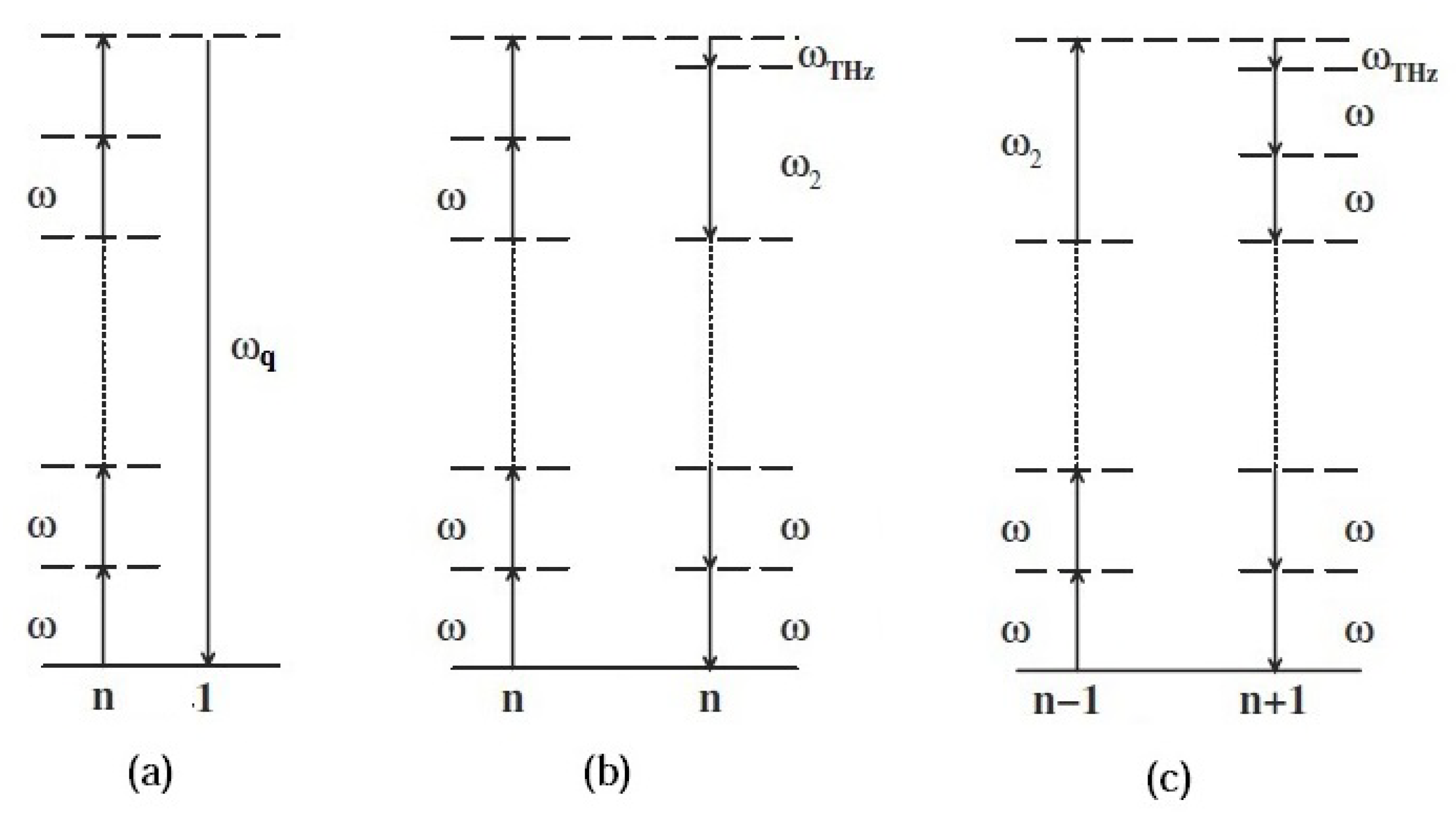
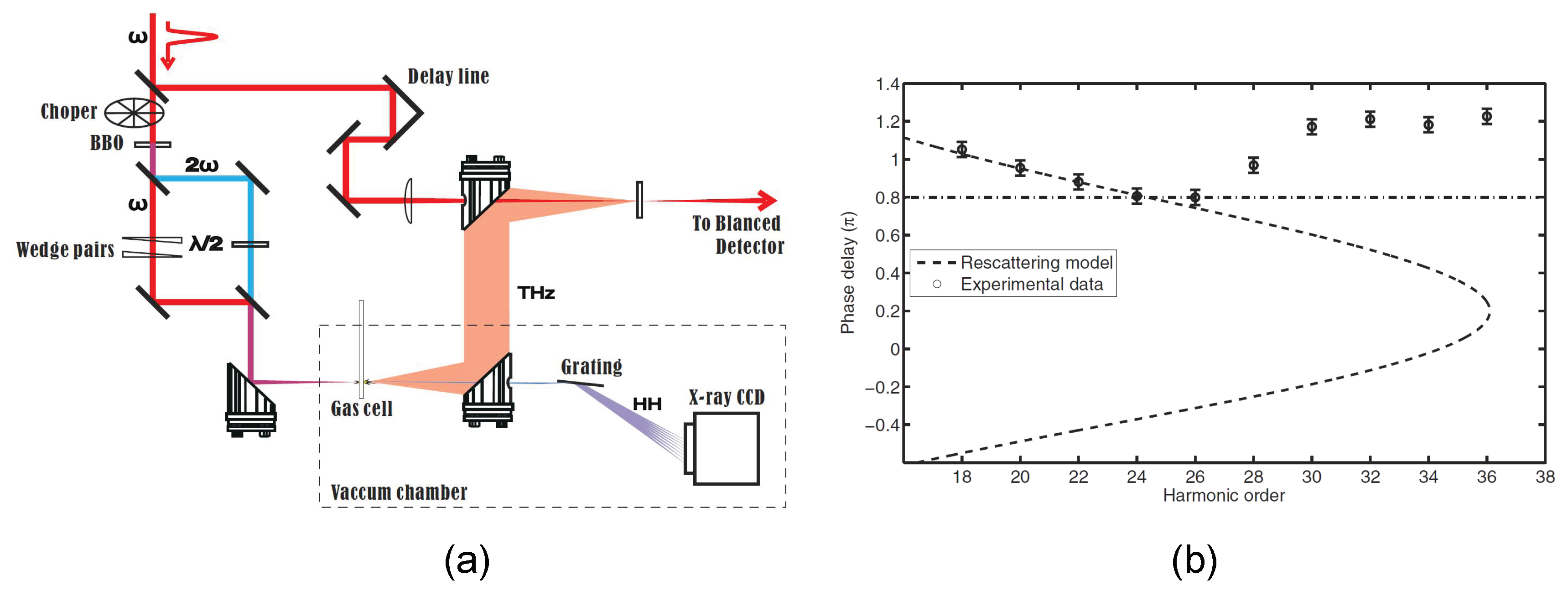

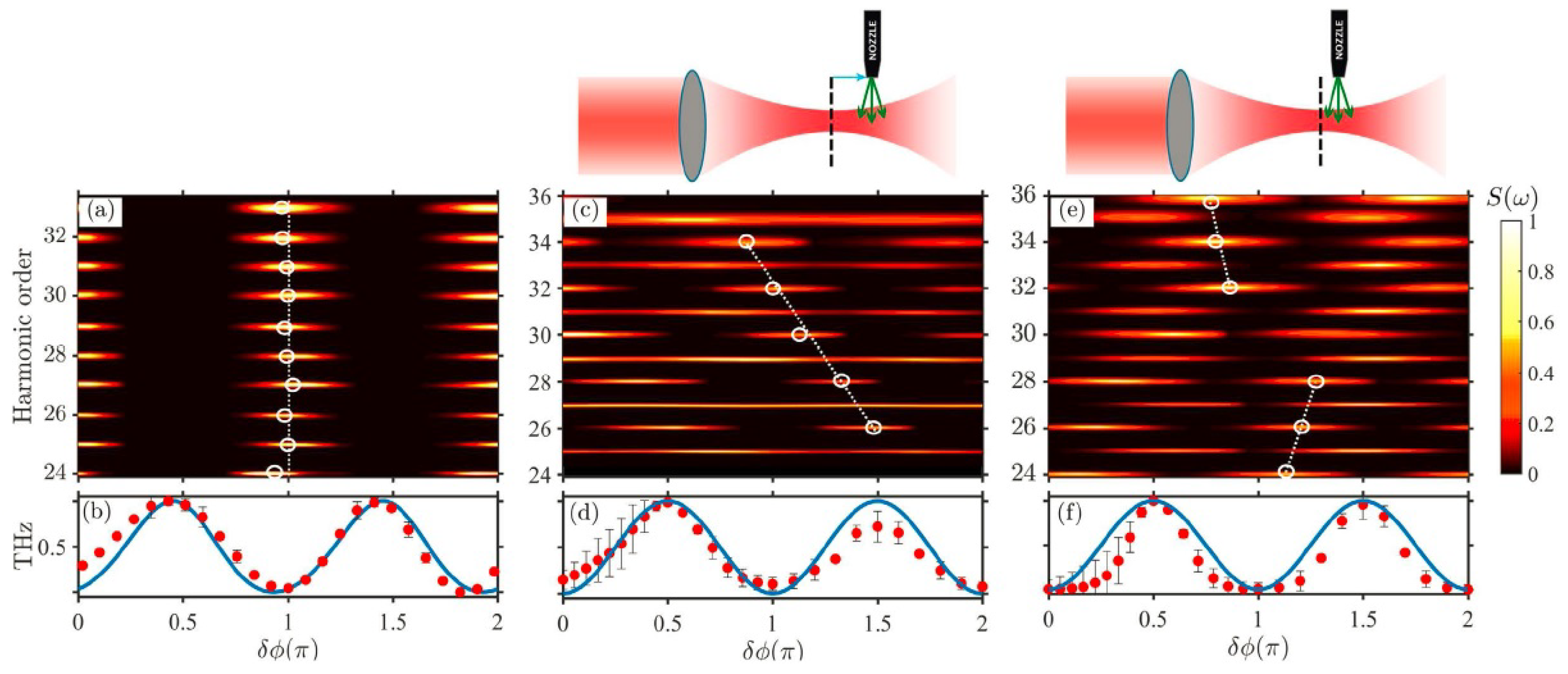

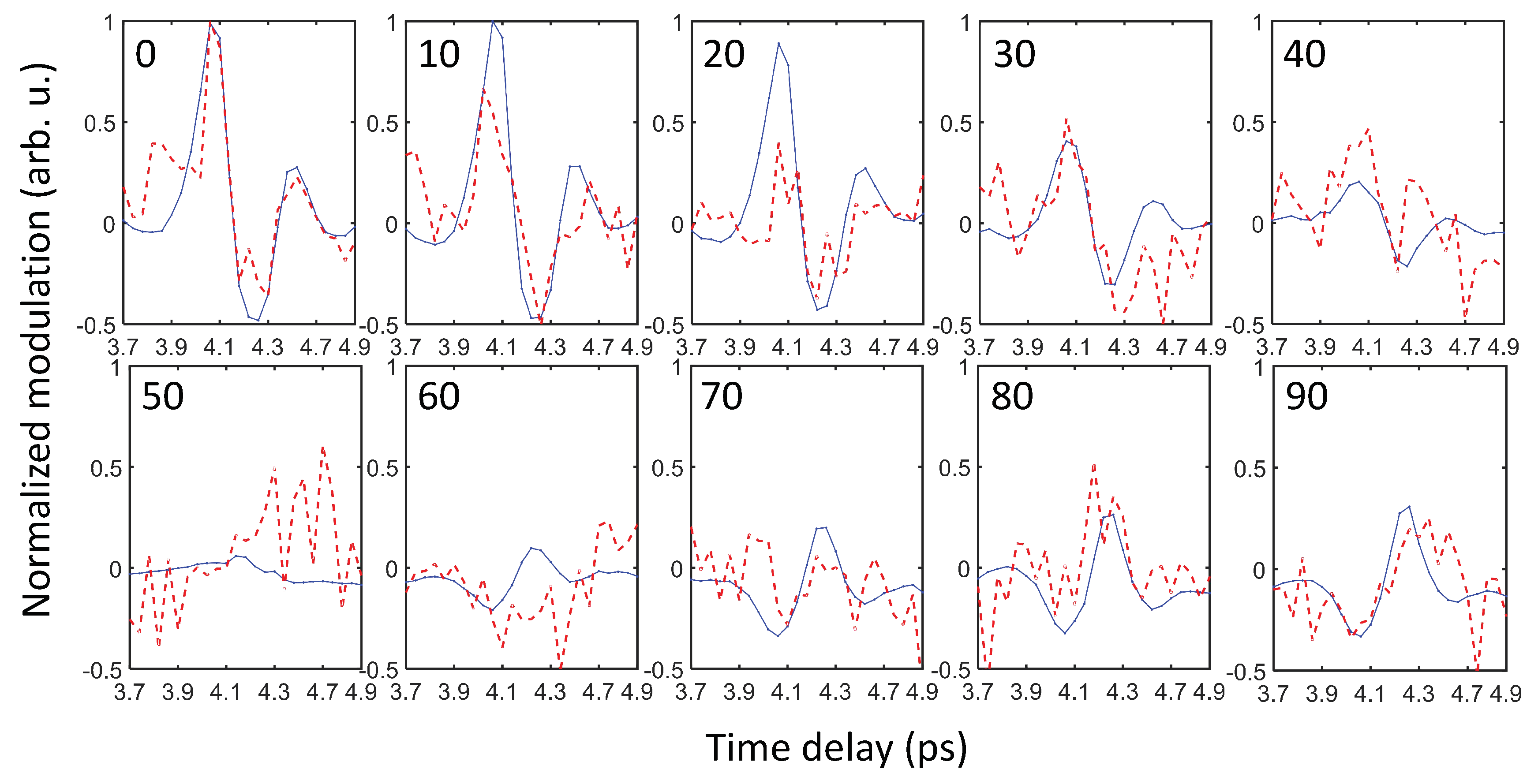

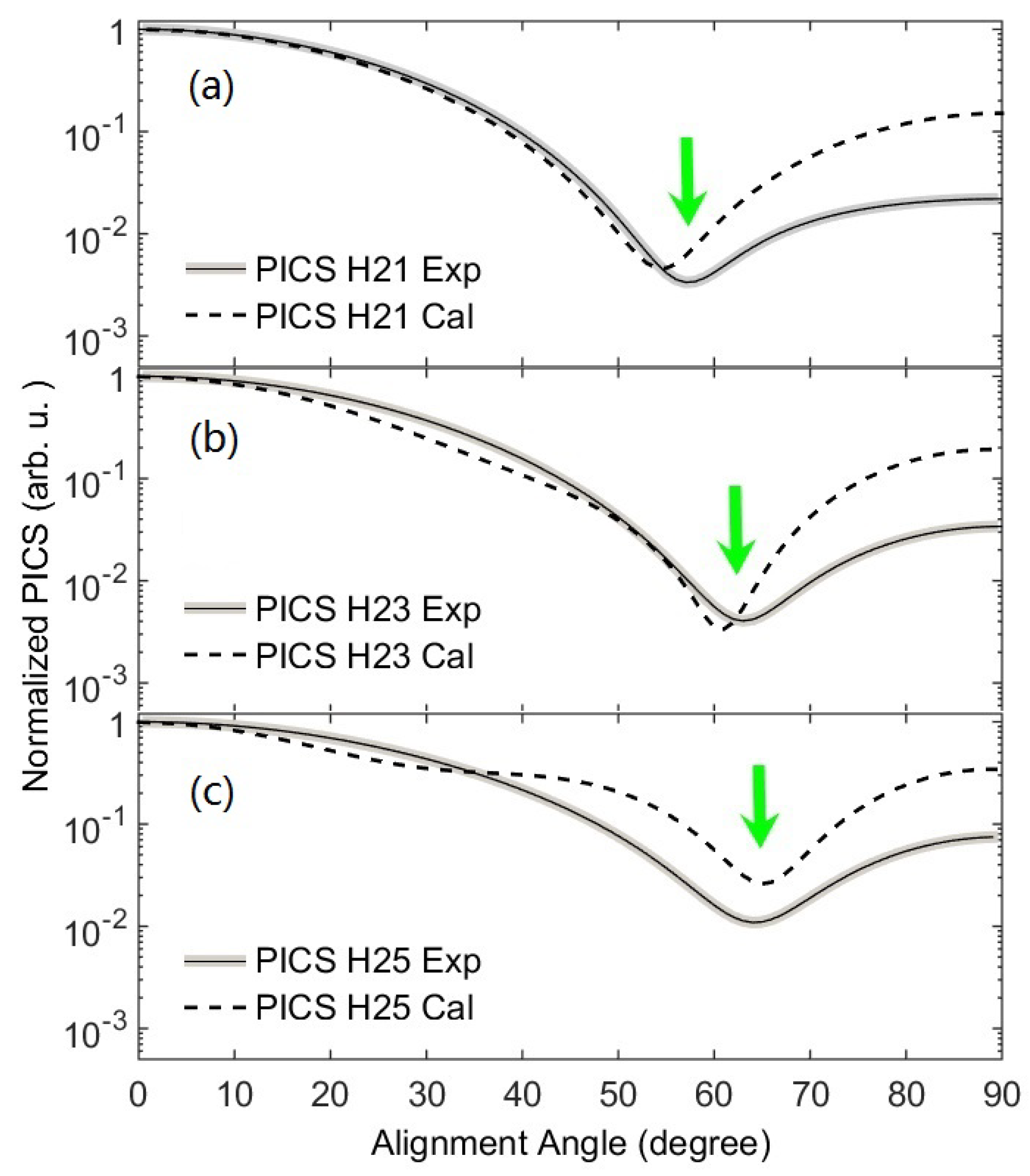
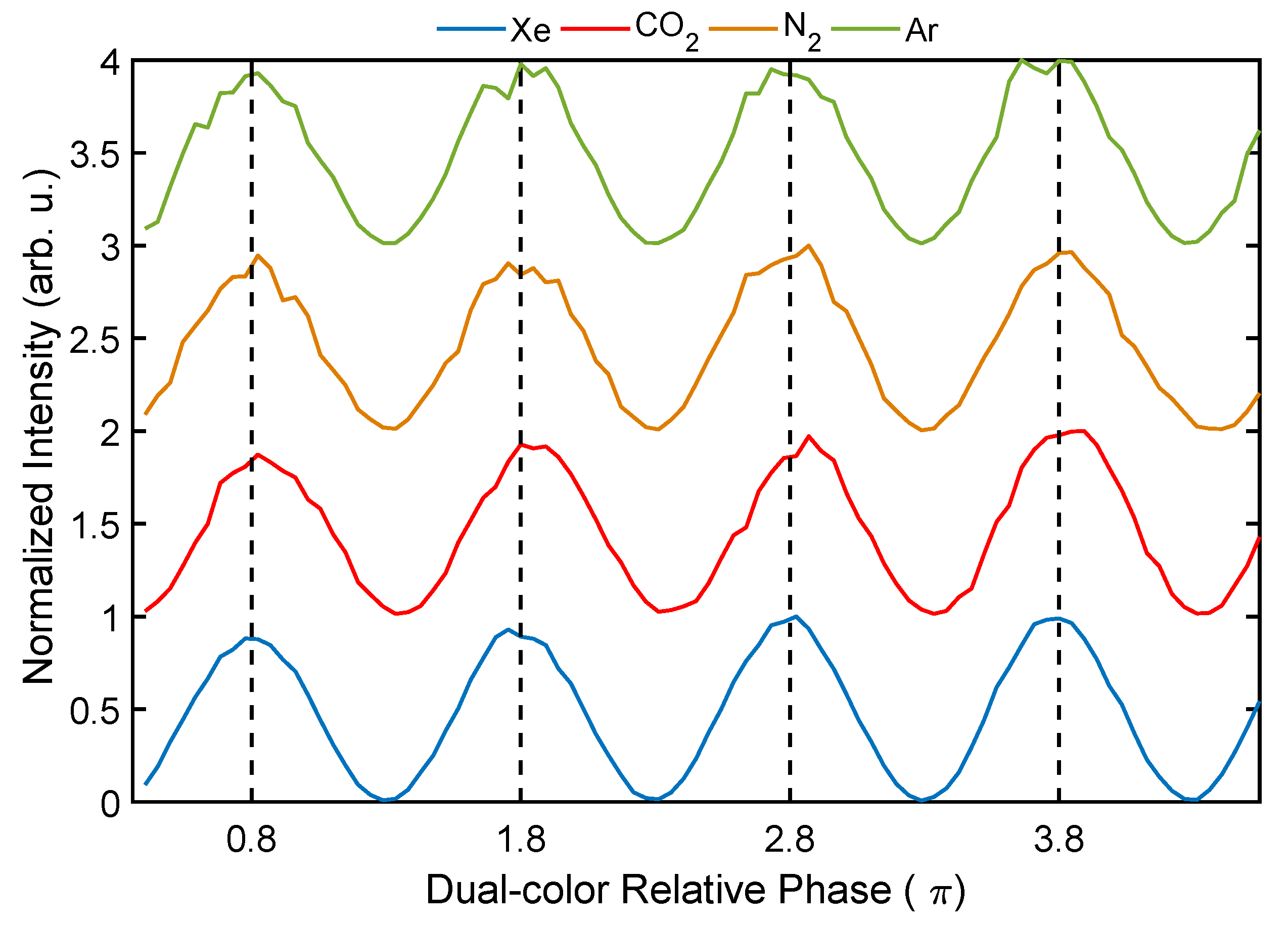

© 2019 by the authors. Licensee MDPI, Basel, Switzerland. This article is an open access article distributed under the terms and conditions of the Creative Commons Attribution (CC BY) license (http://creativecommons.org/licenses/by/4.0/).
Share and Cite
Huang, Y.; Chang, C.; Yuan, J.; Zhao, Z. High-Harmonic and Terahertz Spectroscopy (HATS): Methods and Applications. Appl. Sci. 2019, 9, 853. https://doi.org/10.3390/app9050853
Huang Y, Chang C, Yuan J, Zhao Z. High-Harmonic and Terahertz Spectroscopy (HATS): Methods and Applications. Applied Sciences. 2019; 9(5):853. https://doi.org/10.3390/app9050853
Chicago/Turabian StyleHuang, Yindong, Chao Chang, Jianmin Yuan, and Zengxiu Zhao. 2019. "High-Harmonic and Terahertz Spectroscopy (HATS): Methods and Applications" Applied Sciences 9, no. 5: 853. https://doi.org/10.3390/app9050853
APA StyleHuang, Y., Chang, C., Yuan, J., & Zhao, Z. (2019). High-Harmonic and Terahertz Spectroscopy (HATS): Methods and Applications. Applied Sciences, 9(5), 853. https://doi.org/10.3390/app9050853




